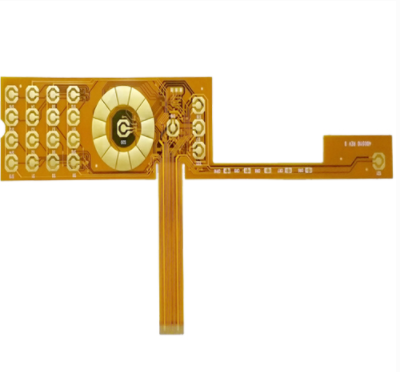What is the meaning of flexible circuit board and rigid circuit board
Printed circuit boards can be divided into rigid printed boards and flexible printed boards according to the materials they make. Rigid printed boards include phenolic paper laminates, epoxy paper laminates, polyester glass mat laminates, and epoxy glass cloth laminates. The flexible printed circuit board is also called the flexible printed circuit board or FPC flexible circuit board. The flexible circuit board is made of polyimide or polyester film with high reliability and high bending. Sexual printed circuit board. This kind of circuit board has good heat dissipation, which can be bent, folded, rolled, and can be moved and stretched freely in three-dimensional space. FPC can be used to reduce the volume, achieve lighter weight, miniaturization, and thinner, so as to realize the integration of component devices and wire connections. FPC flexible circuit boards are widely used in industries such as electronic computers, communications, aerospace and home appliances.
Features of flexible circuit boards:
(1) Low cost.
(2) The continuity of processing.
(3) FPC is conducive to thermal diffusion.
(4) FPC is small in size and light in weight.
(5) FPC can move, bend and twist.
(6) FPC can be installed in three positions.
(7) FPC has high assembly reliability and assembly operability.
(8) FPC flexible circuit boards have excellent electrical properties, dielectric properties and heat resistance.

Flexible circuit board product characteristics:
The soft board is a printed circuit made of a flexible insulating base material, which has many advantages that a rigid printed circuit board does not have.
The product is small in size, light in weight, and greatly reduces the volume of the device, which is suitable for the needs of electronic products to develop in the direction of high density, miniaturization, light weight, thinness, and high reliability. It has high flexibility, can be freely bent, wound, twisted, folded, three-dimensional wiring, arbitrarily arranged according to the space layout requirements, changing the shape, and arbitrarily moving and stretching in the three-dimensional space, so as to achieve assembly assembly and wire connection Integration.
It has excellent electrical properties, high temperature resistance and flame resistance. Stable chemical changes, good stability, and high reliability. It has higher assembly reliability, provides convenience for circuit design, and can greatly reduce the assembly workload, and it is easy to ensure the performance of the circuit, so that the cost of the whole machine is reduced. Through the use of reinforcing materials to increase its strength, in order to obtain additional mechanical stability. The design of the combination of soft and hard also makes up to a certain extent for the slight deficiency of the flexible substrate in the load-bearing capacity of the component.
Rigid circuit board features:
Can be high-density. For more than 100 years, the high density of printed boards has been able to develop along with the improvement of integrated circuit integration and the advancement of mounting technology.
Manufacturability. With modern management, it can be standardized, scaled (quantified), automated, etc., to ensure product quality consistency.
High reliability. Through a series of inspections, tests and aging tests, the PCB can work reliably for a long time (usually 20 years).
Testability. A relatively complete test method, test standard, various test equipment and instruments have been established to detect and appraise the eligibility and service life of PCB products.
Designability. For PCB performance (electrical, physical, chemical, mechanical, etc.) requirements, printed board design can be achieved through design standardization, standardization, etc., with short time and high efficiency.
Rigid circuit board function:
After electronic equipment adopts printed boards, due to the consistency of similar printed boards, manual wiring errors can be avoided, and electronic components can be automatically inserted or mounted, automatic soldering, and automatic detection, ensuring the quality of electronic equipment, Improve labor productivity, reduce costs, and facilitate maintenance.
The difference between flexible circuit board and rigid circuit board:
Rigid circuit boards and flexible circuit boards have both similarities and differences before. For flexible circuit boards, rigid circuit boards are more widely used. Because rigid circuit boards appeared earlier, most of the design elements of rigid circuit boards have been applied to the design of flexible circuit boards. What are the differences before flexible circuit boards?
1. Flexibility: The flexibility of rigid circuit boards is of course inferior to that of flexible circuit boards. For a large number of bending cycles, flexible circuit boards have better performance.
2. Shape. Under normal circumstances, the rectangle will be chosen, which can save the base material very well, and there should be enough free margin near the edge. If it is a sharp inner corner, it may cause the board to tear. Therefore, the smaller wire width and spacing should be minimized as much as possible, and the transition must be as smooth as possible. Sharp corners will naturally concentrate stress and cause wire failure.
3. Current-carrying capacity of the wire: Compared with the rigid circuit board, the heat dissipation performance of the flexible circuit board is relatively poor, so it is necessary to provide sufficient wire width. Due to the heat dissipation problem of the flexible circuit board, it is necessary to give extra width or spacing to the wires.